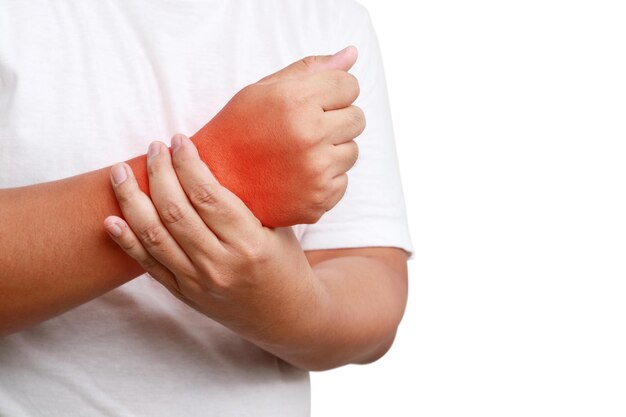Synovitis is the inflammation of the synovial membrane, which lines the joints and produces synovial fluid to lubricate them. This condition can cause pain, swelling, and reduced range of motion in the affected joint. Understanding the symptoms, causes, and treatment options for synovitis is essential for managing this condition effectively.
Symptoms of Synovitis
The symptoms of synovitis can vary in severity and may include:
- Joint Swelling: One of the most noticeable signs of synovitis is swelling around the affected joint. This swelling is due to the accumulation of fluid and inflammation in the synovial membrane.
- Pain and Tenderness: Individuals with synovitis often experience pain and tenderness in the affected joint, which may worsen with movement or pressure.
- Stiffness: Inflammation can lead to stiffness in the joint, making it difficult to move it freely. This stiffness may be more pronounced in the morning or after prolonged periods of inactivity.
- Warmth and Redness: The affected joint may feel warm to the touch and appear red due to increased blood flow and inflammation.
- Reduced Range of Motion: As inflammation progresses, individuals may notice a decreased range of motion in the affected joint, making it difficult to perform daily activities.
- Popping or Clicking Sensation: Some people may experience a popping or clicking sensation in the joint during movement, which can be associated with the inflammatory process.
Causes of Synovitis
Synovitis can be caused by a variety of factors, including:
- Injury or Trauma: Direct injury to a joint, such as a sprain or fracture, can lead to synovitis as the body responds to the damage with inflammation.
- Overuse: Repetitive movements or excessive use of a joint can cause wear and tear on the synovial membrane, leading to inflammation.
- Autoimmune Diseases: Conditions such as rheumatoid arthritis and lupus can cause chronic inflammation of the synovial membrane, resulting in synovitis.
- Infections: Bacterial or viral infections can lead to infectious synovitis, where the synovial membrane becomes inflamed due to the presence of pathogens.
- Metabolic Disorders: Conditions such as gout can cause the accumulation of uric acid crystals in the joint, leading to inflammation and synovitis.
Treatments for Synovitis
The treatment for synovitis focuses on reducing inflammation, relieving pain, and restoring joint function. Common treatment options include:
- Rest and Activity Modification: Reducing activities that exacerbate symptoms can help alleviate pain and inflammation. In some cases, immobilization with a splint or brace may be recommended.
- Ice Therapy: Applying ice packs to the affected joint can help reduce swelling and numb pain. Ice should be applied for 15-20 minutes several times a day.
- Medications: Over-the-counter nonsteroidal anti-inflammatory drugs (NSAIDs), such as ibuprofen or naproxen, can help reduce pain and inflammation. In some cases, a healthcare provider may prescribe stronger medications or corticosteroids for more severe inflammation.
- Physical Therapy: A physical therapist can design an exercise program to improve joint strength and flexibility, helping to restore function and reduce stiffness.
- Injections: In some cases, corticosteroid injections may be administered directly into the joint to provide rapid relief from inflammation and pain.
- Surgery: In severe cases or when conservative treatments fail, surgical intervention may be necessary to remove damaged tissue or repair the joint.
Synovitis can significantly impact an individual’s quality of life, but understanding its symptoms, causes, and treatment options can lead to effective management. If you experience persistent joint pain, swelling, or stiffness, it is essential to consult a healthcare professional for an accurate diagnosis and appropriate treatment plan. Early intervention can help prevent complications and restore joint function, allowing for a more active and pain-free lifestyle.










